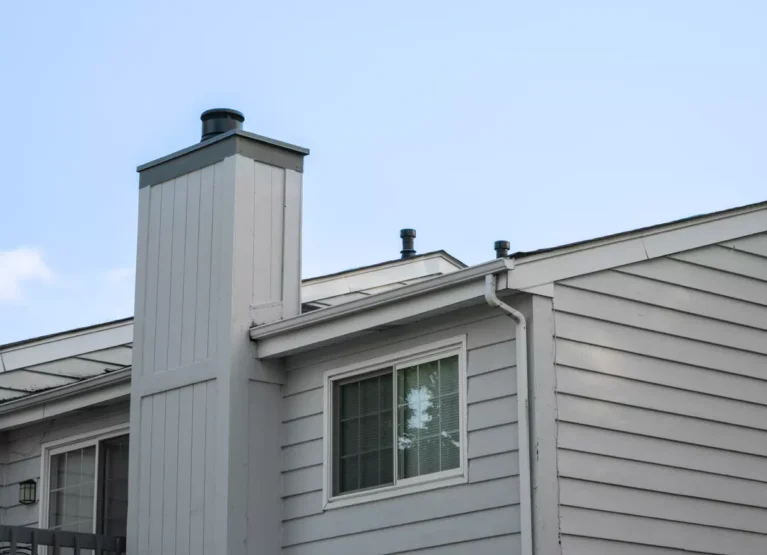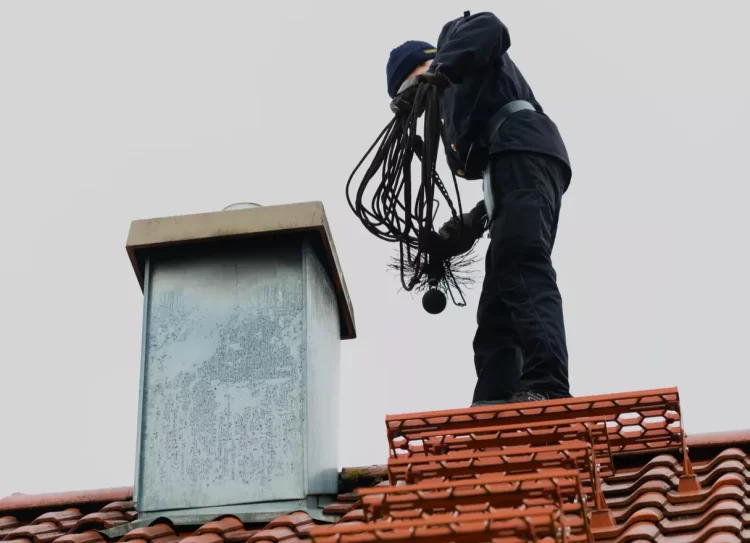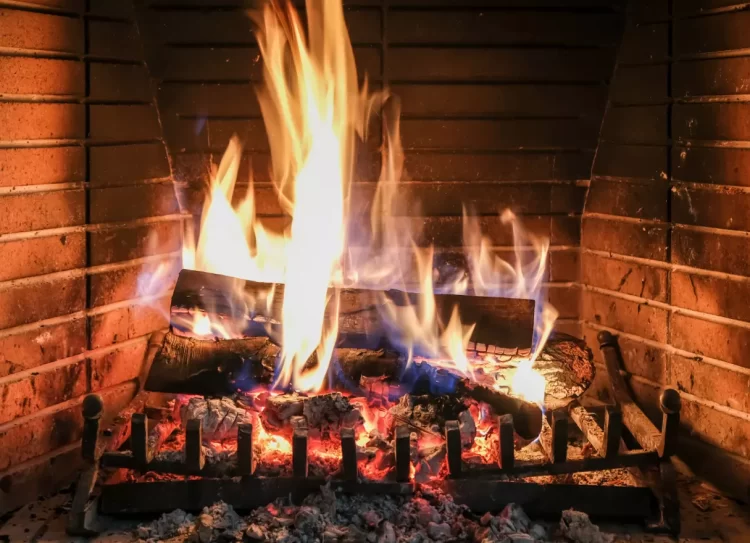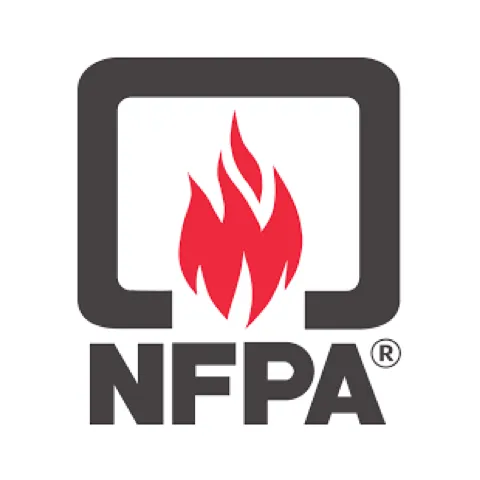Chimney Flues: Types, Construction, and Safety Tips
Chimney flues come in various types, such as clay tile, stainless steel, and aluminum. Their primary function is to provide a passage for smoke and combustion byproducts to safely exit the home while preventing heat transfer to combustible materials. Each type has its own advantages, and regular maintenance is crucial for ensuring optimal performance and safety.
Overview of Chimney Structures
The construction of a chimney involves several key components, each with its essential role in the efficient operation and safety of the chimney system. One of the integral components is the flue, which serves as a passage for combustion gases and smoke to exit the home and prevents any backflow into the living space. It’s like a vital thoroughfare ensuring a free flow and direction for smoke – hence keeping your living space free from potentially harmful fumes.
The Role of the Chimney Cap
Another critical part is the chimney cap. While it might seem like a relatively simple addition to the top of your chimney, its role extends far beyond just aesthetics. The cap acts as a barrier against rainwater, debris, birds’ nests, and other elements that might otherwise enter and obstruct your flue. These blockages can lead to erosion over time.
Understanding the Chimney Crown
Beneath the cap lies the crown. This component is often overlooked but plays a crucial role in safeguarding the masonry against water damage. Acting as an umbrella for your chimney, it shields the structure from water intrusion, ultimately preventing cracks and leaks that could compromise the integrity of your chimney.
The Significance of Dampers and Flashing
Two more components come into play: dampers and flashing. Dampers, like lids on pots, control the amount of air flowing through your fireplace to regulate heat, conserve energy, and prevent drafts when not in use. Flashing, typically made of metal, provides a protective barrier between your roof and chimney. It’s responsible for preventing water from seeping into places where it shouldn’t be—protecting your home against water damage.
Each part works together to maintain structural integrity and safety in the operation of your chimney system. Understanding these components is vital for proper maintenance and to ensure the longevity of your fireplace.
Flue Types and Material Options
When it comes to flues, there are two primary types: masonry and metal. Each has its unique pros and cons, and understanding them will help you make informed decisions about your flue installation or maintenance.
Masonry Flues
Masonry flues are what most people imagine when they think of a traditional chimney—an assembly of bricks and mortar creating a strong, durable structure. These flues are usually built with clay tiles to line the interior of the chimney, providing heat resistance and a smooth surface for efficient airflow. However, over time, these clay liners can deteriorate due to exposure to heat and corrosive byproducts of combustion such as acids and water vapor.
One option for revitalizing aging masonry flues is the use of relining systems. These systems preserve the existing chimney structure while installing a new liner that improves ventilation efficiency and safety. However, while providing a more cost-effective alternative to rebuilding the entire chimney, relining requires skilled professionals to ensure correct sizing and installation.
Metal Flues
In contrast, metal flues are constructed using stainless steel or aluminum. These materials offer excellent resistance to corrosion and are known for their durability, making them a popular choice for modern chimney construction or renovations. Metal flues also come in flexible or rigid stainless steel liners which provide options for various chimney configurations and architecture types.
For instance, if your home does not have an existing chimney or if you want to convert to a gas fireplace, a stainless steel metal flue can be installed vertically or horizontally without the need for extensive masonry work. This not only reduces installation time but can also save on costs associated with traditional masonry construction.
Both types of flues have their advantages and drawbacks – masonry provides a classic look and excellent durability but requires regular maintenance, while metal offers flexibility in design and installation but may lack the aesthetic appeal of traditional brickwork.
Understanding both options is vital in deciding which material suits your needs best. Considering factors such as local building codes, fuel type, architectural design, and climate conditions is crucial in making an informed decision about selecting the most appropriate materials for your chimney’s flue.
Heat Insulation and Liners
When it comes to the warmth of a fire crackling in your fireplace, it’s all about keeping that heat right where you want it – inside the chimney. This is where heat insulation proves its value — acting as a protective barrier against heat transfer to combustible materials surrounding your fireplace, making the entire setup much safer.
There are various ways to accomplish this. First, we have refractory insulation, which withstands extremely high temperatures without deforming or breaking down. This type of insulation forms a barrier that keeps the outside from getting too hot and prevents the inside from cooling down too fast.
While refractory insulation is ideal for some chimneys, others might need something extra durable like insulating concrete forms (ICFs). These forms offer incredible fire resistance and improve energy efficiency due to their excellent insulating properties.
The Role of Chimney Liners
Another essential component of chimney safety is the liner, providing protection from excessive heat exposure and corrosion and ensuring peak efficiency of your chimney while safeguarding your home from potential damage.
These liners come in various materials such as stainless steel, aluminum, or even flue tiles, each catering to different needs and requirements.
- Stainless steel liners are incredibly durable and resistant to corrosion, making them ideal for long-term use.
- Aluminum liners are lightweight and highly malleable, best suited for gas appliances.
- Flue tiles present a traditional option known for their fire resistance and durability.
Each material has its place depending on how you intend to use your chimney. They collaboratively create a safe environment where you can enjoy the comfort of a warm fire without worrying about potential hazards.
The Construction of Chimney and Flue
Imagine each time you enjoy a warm fire, the smoke has to escape your home safely through a network designed specifically for that purpose. These networks are known as chimneys or flues, and each has its unique construction.
Masonry Chimneys
Masonry chimneys, with their enduring appeal and traditional charm, are constructed using materials such as bricks, concrete blocks, or stones. The construction method involves carefully arranging these components in such a way that spaces are left for the flues. The goal is to provide an enclosed path for the harmful byproducts of combustion to exit your home safely and efficiently.
When properly built, masonry chimneys are not only functional but also add a classic touch to the visual appeal of a home. This combination of practicality and aesthetics is what makes masonry chimneys a common choice for many homeowners.
Metal Flue Construction
In contrast to masonry chimneys, metal flues offer a more modern approach to venting out smoke from your home. Prefabricated and installed within the masonry structure, metal flues ensure a clear and unobstructed path for smoke and gases to exit the home.
A common type of metal flue is made from stainless steel, which provides durability and resistance against corrosion. The seamless installation of these metal flues ensures that any potentially harmful elements are efficiently carried away from your living space without causing harm.
Knowing the construction specifics of your chimney and flue can help you understand how they function and what maintenance they might require. With this knowledge in hand, you’re better equipped to identify any warning signs of wear and tear and can appreciate the craftsmanship that goes into keeping your home safe while adding a touch of elegance.
Purchasing Chimney Flues and Costs
When it comes to getting a new chimney flue or replacing an existing one, there are crucial factors to consider. You’ll need to factor in the size of your fireplace, the type of material suitable for your setup, as well as the potential installation costs. Whether stainless steel, aluminum, or clay tile liners, each type has its strengths and weaknesses. Also, the method and complexity of installation naturally affect the overall cost of your new system.
Stainless steel flues are popular due to their durability and resistance to corrosion. They are also relatively easy to install compared to other materials. On the other hand, aluminum flues are lightweight and affordable but may not be as durable as stainless steel. Clay tile liners are known for their excellent insulating properties and are well-suited for masonry chimneys. However, installation can be more labor-intensive due to their bulky nature. Therefore, homeowners should carefully assess which material aligns with their specific needs before making a purchasing decision.
For example, if you need a new liner for a wood-burning stove insert installed in your existing chimney, you may opt for a flexible stainless-steel liner given its ease of installation in a variety of chimney styles.
Installation Costs
Now let’s talk about the big question: How much is all of this going to cost? The price will depend on multiple factors such as the size of your chimney, type of material chosen, and the complexity of the installation required. Size matters: Naturally, larger chimneys may necessitate more materials and labor, whereas smaller chimneys will require less.
Material considerations: Stainless steel liners tend to be more expensive than aluminum ones due to their high durability and longer lifespan. Clay tile liners might fall within a mid-range budget but could potentially require greater labor power during installation.
Keep in mind that while initial costs are important considerations, long-term maintenance expenses must also be accounted for.
Safety Tips for Chimney Flues
Like any part of your home, keeping your chimney flue safe and in proper working condition is crucial. If you’re a fireplace user or have a wood stove, you’ll want to pay close attention to these safety tips to maintain a secure and efficient chimney system.
Regular Inspections
Regular inspections are not just a good suggestion; they are crucial for the safety of your home. Even if everything appears fine, it takes an expert to spot potentially problematic issues. Annual inspections by certified professionals are a must. They will ensure that your chimney flue is free of obstructions and in good working condition. These inspections save lives—human and animal—and help prevent fires and property damage. It’s similar to going for regular check-ups at the doctor: you could feel fine, but something could be wrong that only an expert can catch.
Proper Operation
Properly operating your chimney flue goes a long way in maintaining its safety as well. Following the manufacturer’s guidelines is important for safe operation. Simple steps like opening the damper before starting a fire and closing it when the fireplace is not in use can make all the difference in preventing fire hazards. It’s akin to following the instructions on a new gadget you buy—those instructions are there for a reason and they help you get the best use out of your appliance.
Carbon Monoxide Detectors
When it comes to safety measures, installing carbon monoxide detectors near the fireplace is indispensable. Regularly check these detectors to detect any potential leaks promptly. Carbon monoxide is incredibly dangerous—they call it a silent killer because it’s hard to detect without special equipment. Ensuring that these detectors are not only installed but also working properly can make all the difference for the safety of residents.
Just like routine car maintenance keeps you safe on the road, these safety tips help keep your chimney flue safe and functional for years to come. Making these small efforts ensures that you can enjoy cozy nights by the fire without any risk to your home’s safety.
Incorporating these safety tips into your routine ensures that your chimney flue functions smoothly, creating a warm and inviting atmosphere while keeping potential hazards at bay. Don’t take chances with your home’s safety—prioritize maintenance and precautions! For professional assistance with maintaining your chimney flue, contact Nature’s Own Chimney Cleaning.









